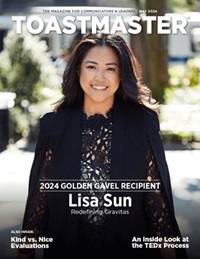
You come home exhausted after a long day, arms full of grocery bags, and you see two of your neighbors leaving your apartment building.
The first neighbor is all smiles, waving hello and asking how your recent vacation went, how your cat is feeling, and what your plans are for the summer. Your tired arms are about to give way, but you make the polite small talk while your neighbor gabs on. Finally, they bid farewell, and you resume your juggling act.
Your second neighbor is rushing through the lobby, looking a little upset and fiddling with their phone while listening to who-knows-what in their earbuds. In their hurry, they slam through the door, almost knocking you out in the process—but then they look up, see you, and silently hold the door open for you to scurry inside just before your vegetables are about to hit the ground. By the time you turn around to thank them, your neighbor is long gone.
Which neighbor would you rather have? The first one’s behavior was nice but not kind. The second’s behavior was kind but not nice.
These are two words that seem to mean the same thing on their face but are entirely different things in practice. Understanding the difference is the key to becoming a better communicator, giving better feedback, and, yes, even being a better neighbor.
Nice is caring about the surface level—being polite or friendly, maintaining decorum, or following social norms. It’s nice to use somebody’s honorific title, give a compliment, or use please and thank you. There’s nothing wrong with nice, but what is really needed when interacting with others is kindness.
Being kind means that you care about the other person as much—or more than—you care about yourself. It’s kind to hold that door open, but it’s also kind to tell people what they need to know and help them improve. Kindness is about caring for others and their well-being, even if it can be uncomfortable in the moment. It’s action, not packaging.
The Benefits of Kind Feedback
The purpose of feedback, in Toastmasters and beyond, is to help somebody understand where they are and how they can improve. But often, it’s more challenging to “just” give feedback to others than in creating your own work. Evaluations can be uncomfortable, and telling somebody that something needs work or isn’t measuring up can be painful for both the sender and receiver.
So, instead of giving critical feedback, people are predisposed to slip into the realm of nice, leaving the kind-but-awkward truths hidden behind high scores and “nice jobs!” This route feels good in the moment, but it ultimately does no good for the person on the receiving end.
A great orator himself, Winston Churchill, said, “Criticism may not be agreeable, but it is necessary. It fulfills the same function as pain in the human body. It calls attention to an unhealthy state of things.” When you shrink from necessary feedback, you prioritize your own well-being over that of your receiver’s, placing agreeableness over necessity.
The Kindness Principles
Three principles help to show kindness in feedback: benefits, focus, and empathy.
1 Benefits.
Highlight the benefits and outcomes rather than just features and details. Take your initial reactions and interrogate them. If you say a speech was “really great” or “a little boring,” explain what you mean. What made it sparkle? Why did you lose interest? Giving feedback with the word “because” in it is the goal, as it helps your listener connect the input to a reason and helps them to improve going forward. There’s also research that shows the word “because” carries its own bit of magic. It turns out that people really like to hear the reasoning for things, and it makes us much more likely to be persuaded. Harvard University’s Ellen Langer showed this in a landmark 1978 study, where researchers tried to get in front of the line at a campus photocopier by using differently worded requests. When the word “because” was used—even in a phrase as meaningless as “because I have to make copies”—the odds of successfully cutting shot up by more than 50%.
2 Focus.
The next step in effective feedback is to maintain focus: What is the one thing that the receiver needs to hear? Focus is challenging for two reasons. First, it can be tempting to throw in polite asides to help soften the anticipated blow of a critical note. And second, evaluators are often unsure of what it is they actually want to say and sprinkling around a few phrases here and there allows them to get through the task without too much sweat. Simplicity and focus are hard—there’s nowhere to hide. It’s also useful to highlight what the receiver authentically did well, which can help prime them to better receive the rest of your feedback; but don’t confuse genuine appreciation with sugarcoating.
3 Empathy.
Finally, practice empathy in feedback. Empathy is understanding your counterpart and meeting them where they are, in terms of language, emotions, motivations, and more. Take a moment to put yourself in their shoes and attempt to figure out why they did what they did or said what they said. Why did they choose their specific speech topic, and how does it fit in their Toastmasters journey? Empathy is a hard muscle to train, but the better you can understand your receiver, the better equipped you’ll be to deliver kind and effective feedback, in a language they will connect with.
Personal Benefits
In Toastmasters, it’s easy to think that the member giving a speech is the one communicating, and that those in the audience are simply just an audience, but that’s ignoring your responsibility to practice strong communication in how you respond.
If you don’t give feedback that connects and helps your colleagues grow, then you have failed. Your duty is to help them, and dishonest politeness just helps you—allowing you to “get done with it” and avoid uncomfortable conversations. Taken together, these principles will better enable you to do the former.
Leaning into this lesson helps the evaluator, too. Beyond the intrinsic value of kindness, there’s some evidence that it’s good for health. Practicing kindness is shown to release oxytocin in the brain, resulting in what’s been dubbed a “helper’s high.” Generosity, through kind communication and other acts, is shown to be tied to lower blood pressure, less depression, greater happiness, and even a longer life. It turns out that the more you help others instead of yourself, the better you feel.
Kind and nice are not mutually exclusive. The hypothetical neighbor from before could have smiled while holding the door open, and you’d likely be better off for it. Actionable and honest feedback delivered with affection will land better than without. But nice is the frosting, and kind is the cake. They’re better together, but only the cake of kindness stands on its own.
Ben Guttmann is a marketing executive, educator, and author. His new book, Simply Put: Why Clear Messages Win—and How to Design Them, is available from Berrett-Koehler Publishers. Learn more at BenGuttmann.com.
Related Articles

Communication
Expert Advice for Evaluations

Evaluation
The Secret to a Meaningful Evaluation

Evaluation


 Previous
Previous

 Previous Article
Previous Article